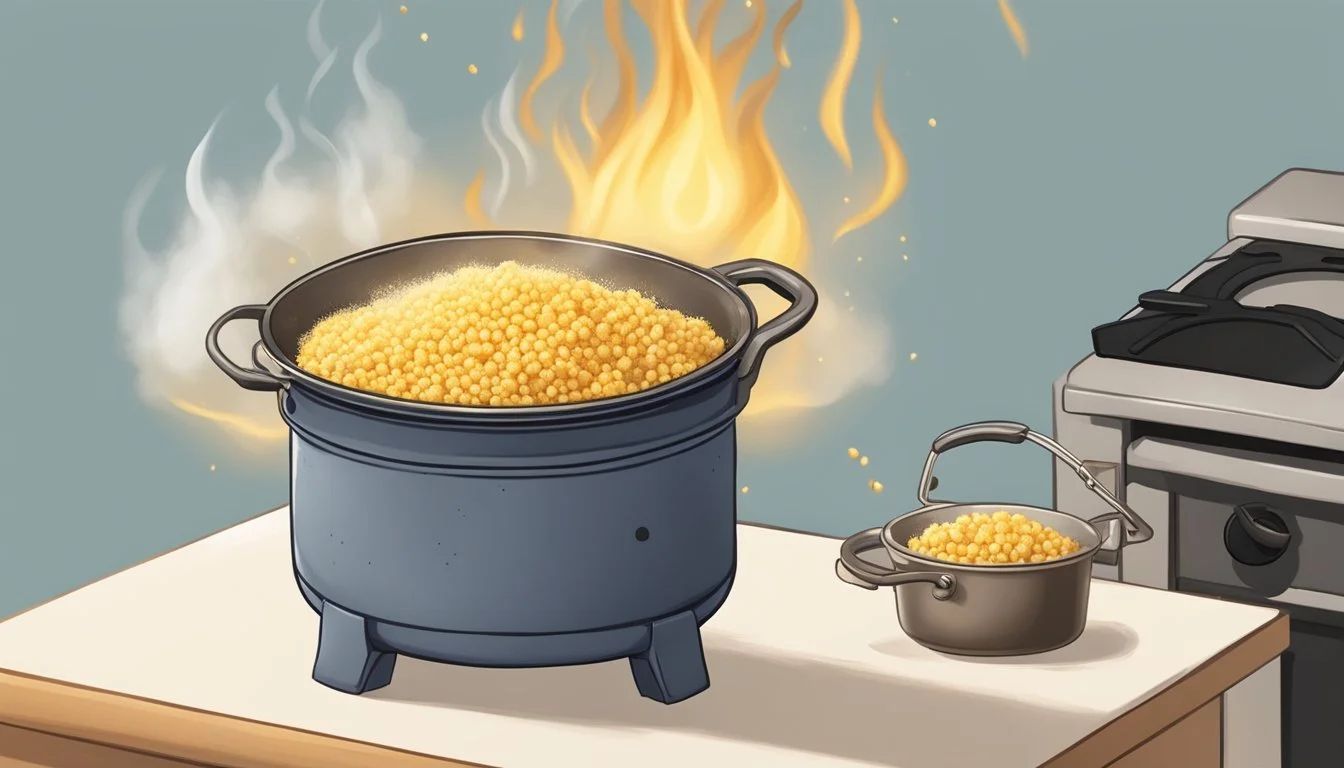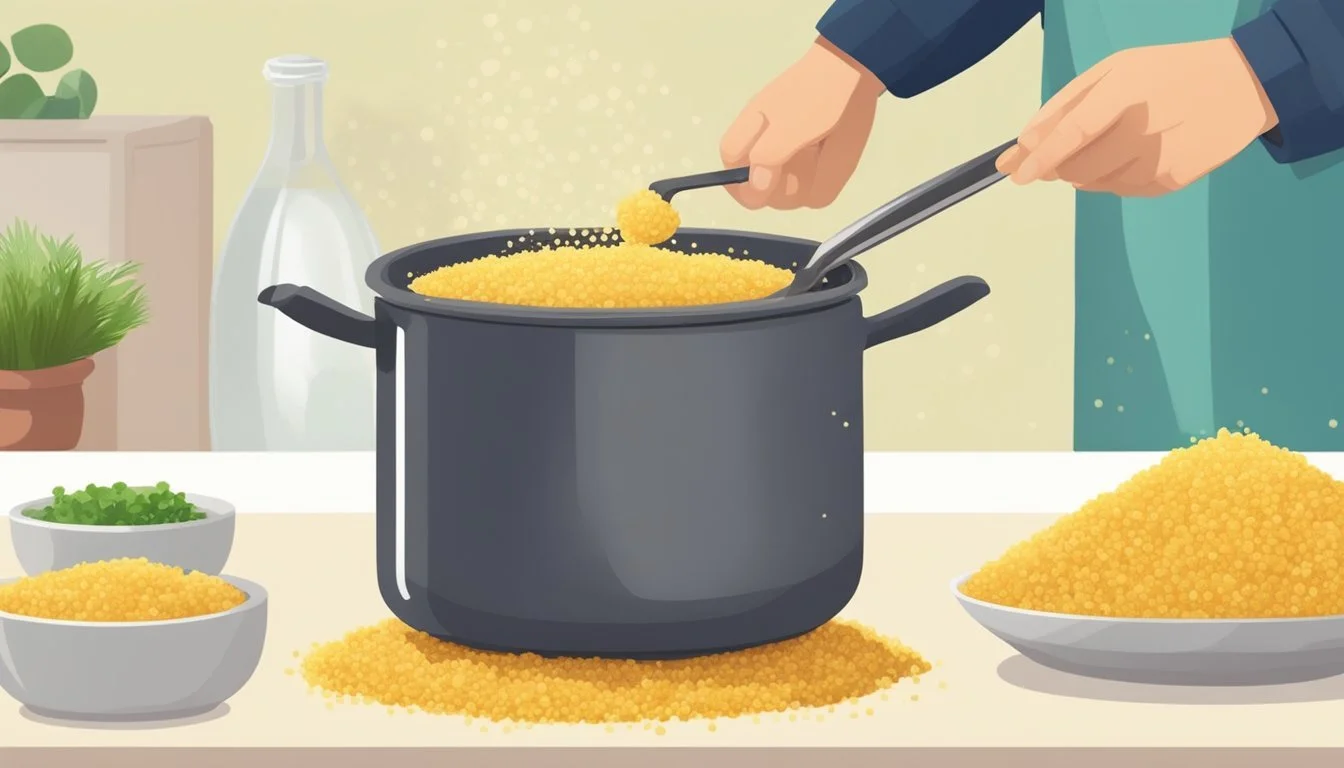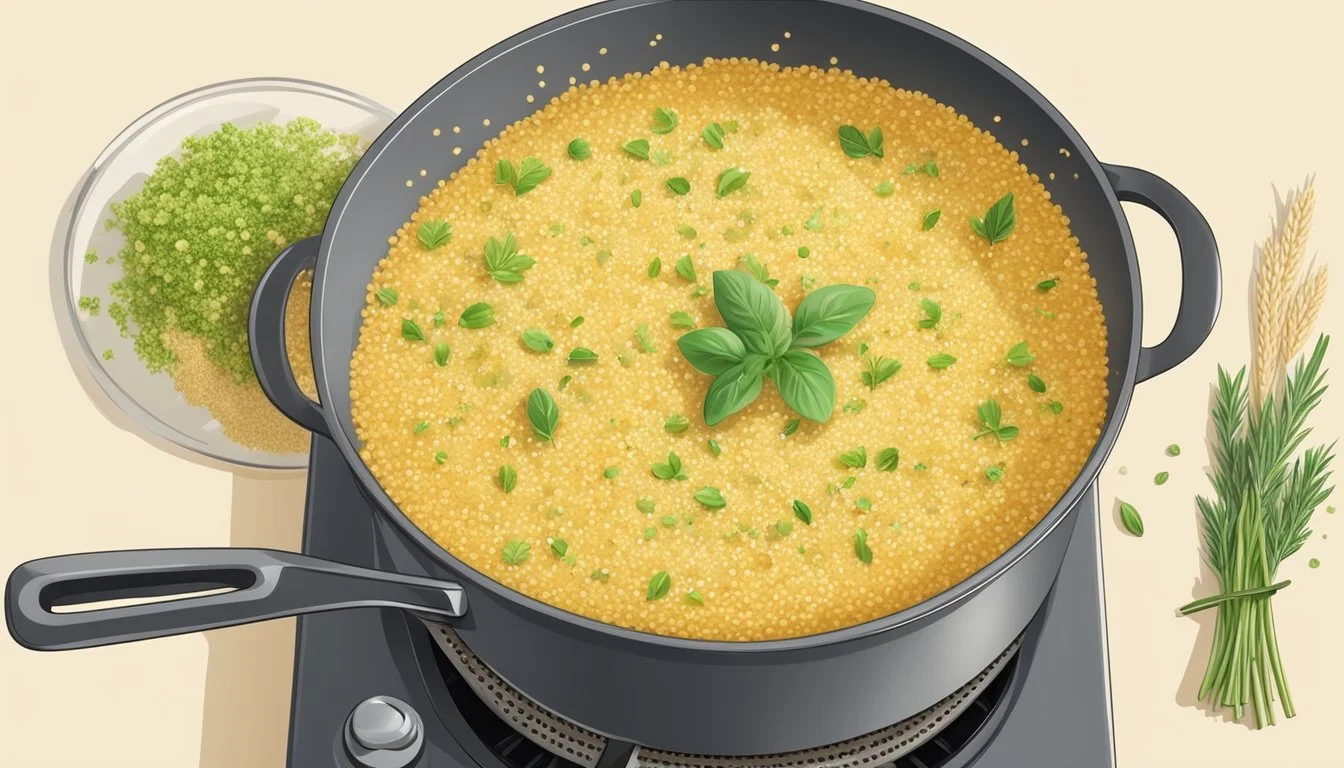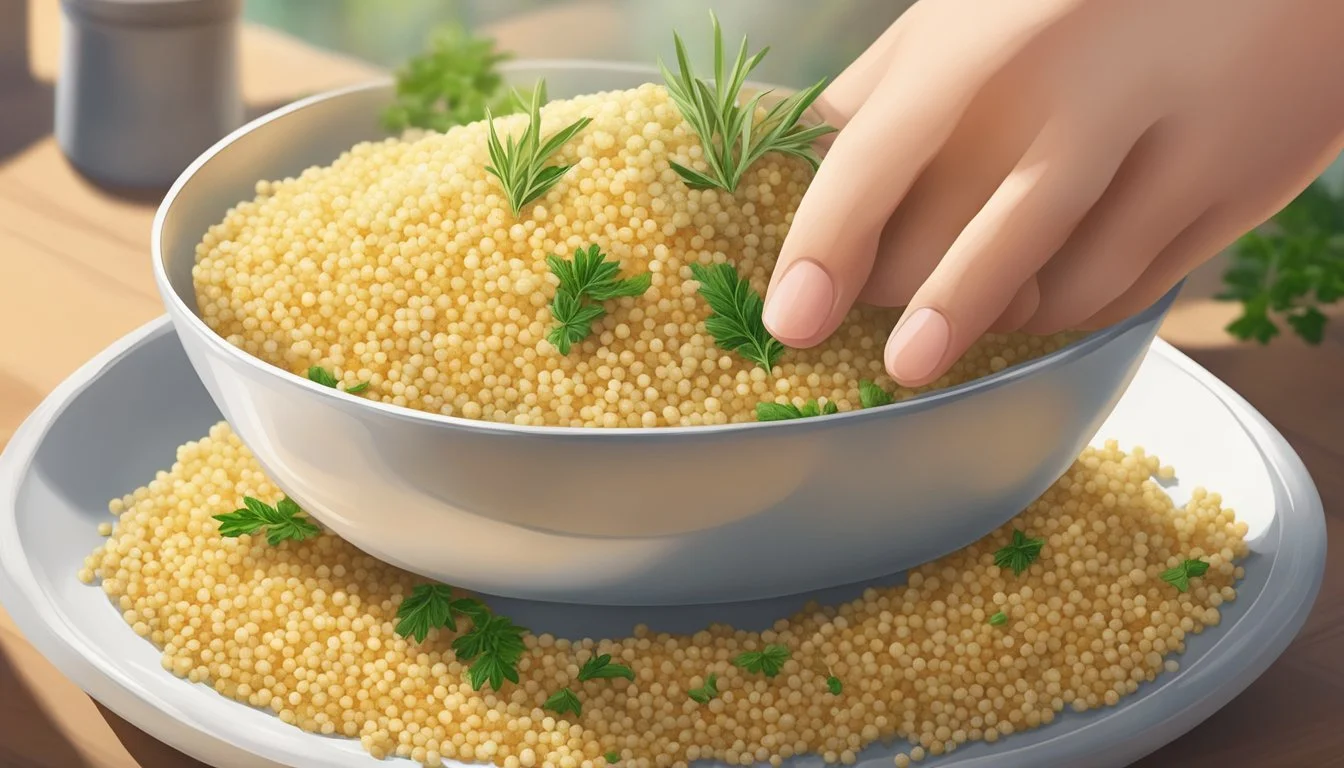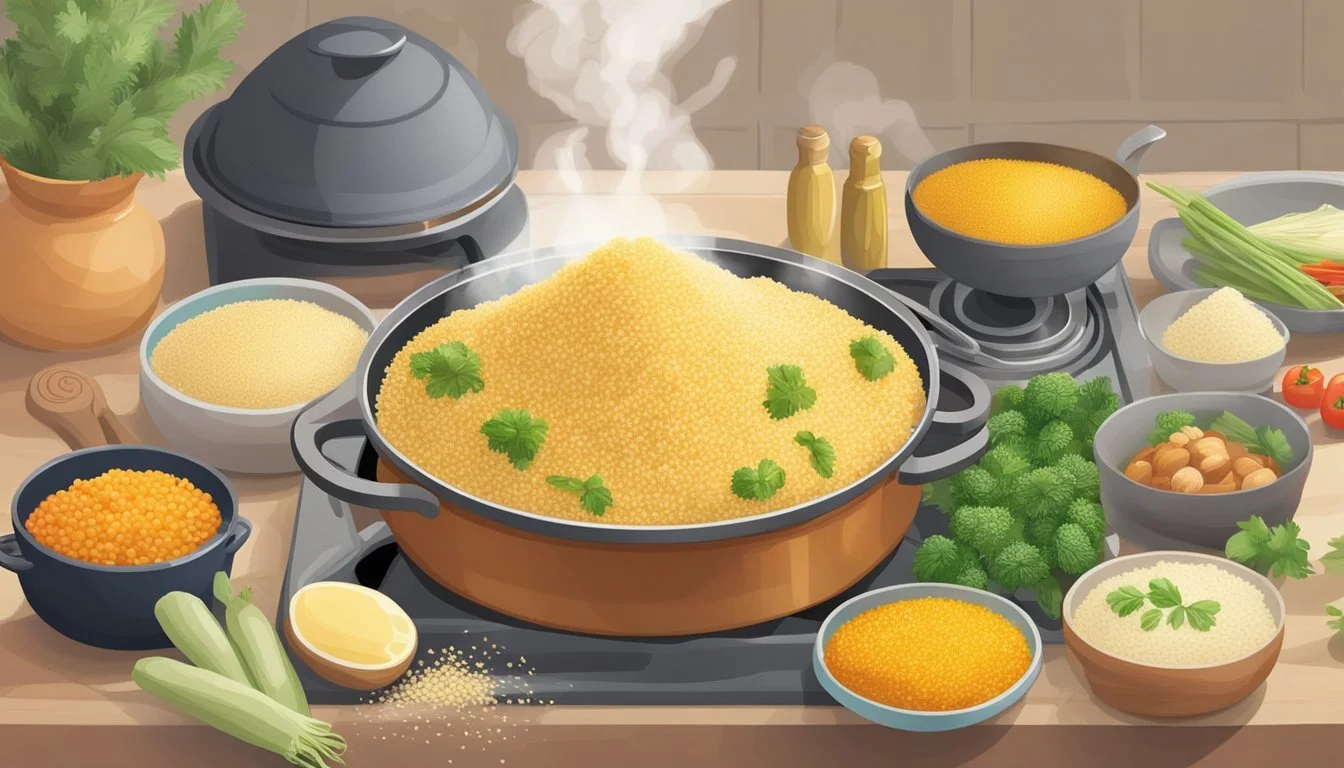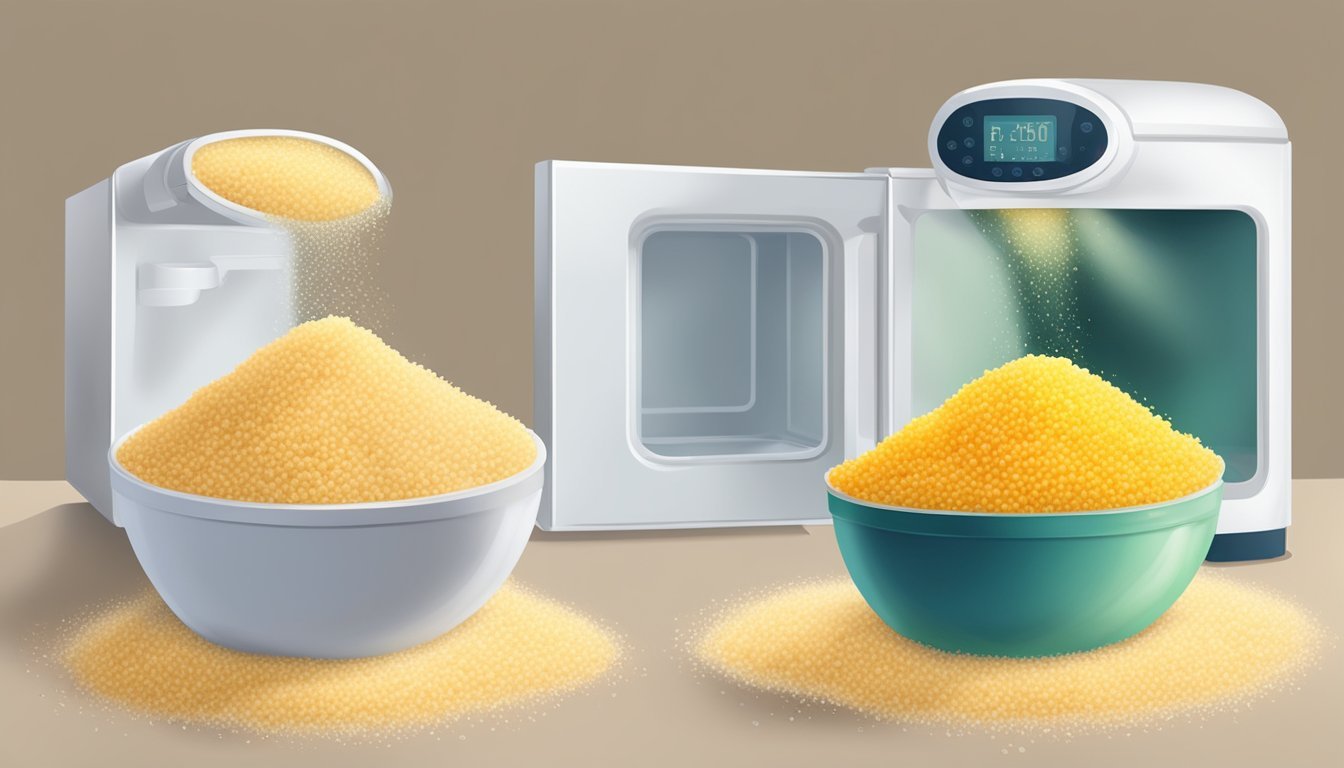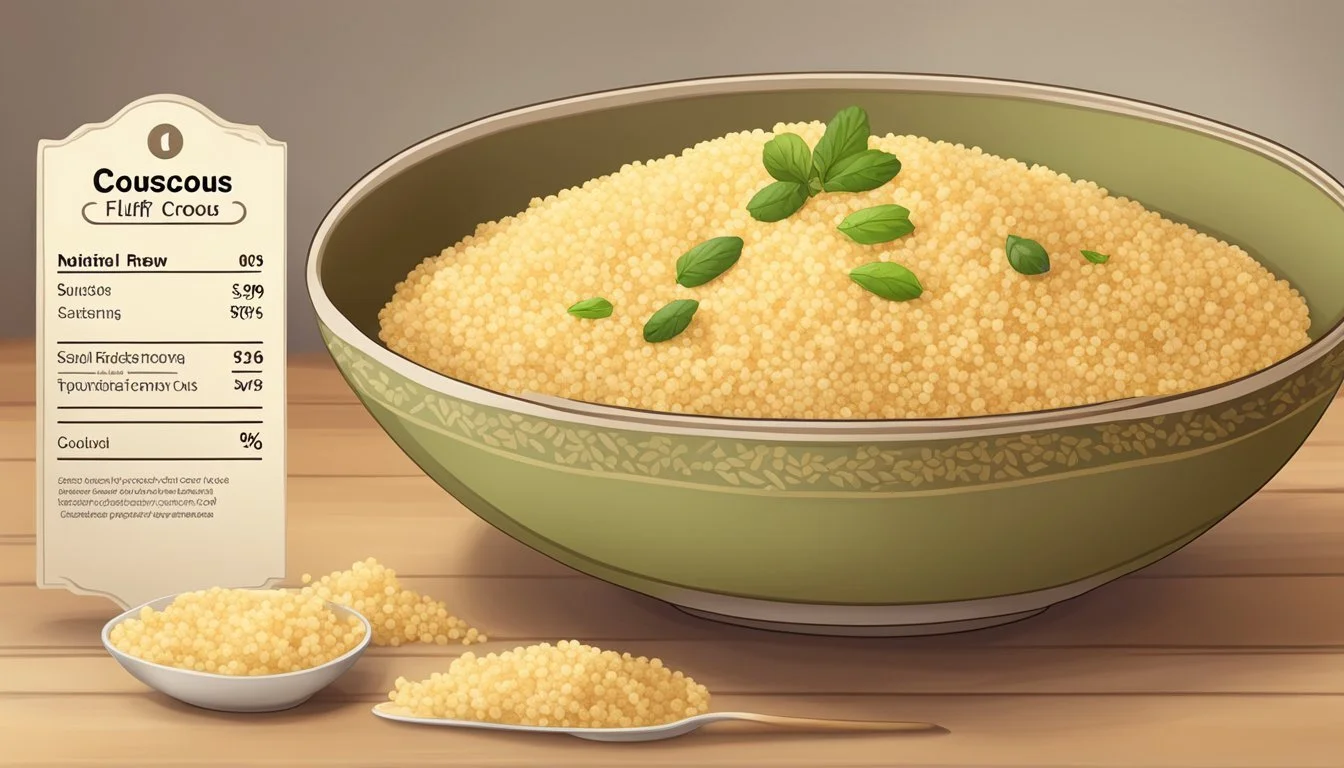Saving Overcooked Couscous
Tips for Reviving Your Grain Dishes
Couscous (What wine goes well with couscous?) is a staple grain in many cuisines, celebrated for its ability to adopt flavors and contribute texture to a variety of dishes. When it comes to preparing couscous, achieving the signature fluffy texture is often the aim, but even experienced cooks can sometimes find themselves with couscous that has overcooked into a sticky and clumpy mass. However, overcooking doesn't have to be the end of a dish. There are techniques that can be employed to save overcooked couscous, restoring its potential as the base for a delicious meal.
The key to rescuing overcooked couscous is to address the excess moisture that causes the grains to stick together. This involves strategic drying or reintroduction of ingredients that can help separate the grains and reintroduce the fluffiness. Additionally, clever integration of flavors and complementary ingredients can transform the texture and elevate the dish entirely.
Understanding the characteristics of couscous and the impact of cooking techniques are crucial in both preventing overcooking and fixing it when it occurs. Through a combination of moisture management and flavor enhancement, overcooked couscous can be salvaged and turned into a delightful dish that pleases the palate. This approach to troubleshooting in the kitchen reaffirms the versatility of couscous and the creativity of cooking.
Understanding Couscous
Couscous is a versatile grain staple associated primarily with North African cuisines but has gained popularity across the globe for its simplicity and adaptability in various dishes. It consists of small granules made by rolling and shaping moistened semolina wheat into tiny spheres and then coating them with finely ground wheat flour.
Nutritional Profile:
Carbohydrates: Couscous is predominantly a carbohydrate source, offering energy for daily activities.
Protein: It provides a moderate amount of protein, which is essential for muscle repair and growth.
Fiber: Whole grain varieties of couscous offer dietary fiber, beneficial for digestion.
Minerals: It contains minerals such as iron, calcium, and potassium, which play crucial roles in maintaining bodily functions.
Vitamins: Couscous has trace amounts of vitamins, such as vitamin A and vitamin C.
Types of Couscous:
Traditional: Small-grained, often steamed and fluffed to achieve its texture.
Israeli or Pearl: Larger in size and has a slightly chewier texture.
Lebanese: The largest of the grains and takes longer to cook.
Derived from durum wheat, couscous holds importance not only in its cultural origins but also as a nutritious element of a balanced diet. Its low fat content, with minimal saturated fat, makes it an attractive option for health-conscious individuals. When integrating couscous into a diet, it's beneficial to consider pairing it with a variety of vegetables and lean proteins to balance the meal.
Types of Couscous
Couscous is a staple grain dish with various forms that vary by size, texture, and region of origin. Each type offers a unique culinary experience due to its distinct characteristics.
Israeli Couscous
Israeli Couscous, also known as "ptitim," is larger than traditional Moroccan couscous and resembles small pearls. It boasts a chewy texture and is versatile in absorbing flavors, making it suitable for salads and side dishes.
Moroccan Couscous
Moroccan Couscous is the smallest and most commonly found variety of couscous. It cooks rapidly and offers a light, fluffy texture ideal for traditional North African dishes, where it often serves as a bed for stews and vegetables.
Lebanese Couscous
Lebanese Couscous, or "Moghrabieh," is medium-sized and similar to Italian acini di pepe. This type of couscous is typically used in Lebanese and Middle Eastern cuisine, bringing a slightly chewier texture to soups and pilafs.
Pearl Couscous
Pearl Couscous is essentially the same as Israeli Couscous and is known for its larger, round shape that resembles pearls. It has a substantial, chewy texture and is commonly used in hearty dishes that require grains to maintain their distinct form and bite.
How to Cook Couscous
Couscous, a staple in North African cuisine, cooks quickly due to its small size. Cooking it properly yields a fluffy, light, and separated texture that serves as a versatile base for a variety of dishes.
Standard Method
To cook couscous using the standard stovetop method, one should start with boiling water in a saucepan. Here is a step-by-step process:
Bring 1 cup of water to a boil in a medium saucepan.
Add 1 cup of couscous to the boiling water along with a pinch of salt.
Remove the saucepan from the heat and cover with a tight-fitting lid.
Allow the couscous to steam for approximately 5 minutes until it has absorbed all the water.
Fluff the cooked couscous with a fork before serving.
Using this method ensures that the couscous will steam correctly in the residual heat, allowing it to become perfectly fluffy and tender.
Microwave Technique
For those seeking a quicker method, couscous can also be cooked in a microwave:
In a microwave-safe bowl, combine 1 cup of couscous with 1 1/2 cups of water.
Cover the bowl with a microwave-safe lid or plate to trap the steam.
Cook on high power for 2-3 minutes or until the water is fully absorbed by the couscous.
Let it sit, covered, for 2 minutes to continue steaming, then fluff with a fork.
One should always be cautious of the steam when removing the cover, as it can be quite hot.
Steaming Couscous
An alternative method, which is more traditional, involves steaming couscous over simmering water:
Place the couscous in a fine-mesh sieve or a special couscoussière if available.
Set the sieve over a pot of simmering water, ensuring the couscous is not in contact with the water.
Cover the couscous with a lid or cloth and steam for about 10-15 minutes.
Remove the couscous and break up any lumps, then return it to steam for a further 10-15 minutes for optimal fluffiness.
Steaming couscous in this manner allows for a light and airy texture that is perfect for absorbing the flavors of the dish it's paired with.
Fixing Overcooked Couscous
When someone discovers their couscous has been overcooked, resulting in a mushy texture, it's essential to act quickly to salvage the dish. Overcooked couscous becomes sticky and loses its signature fluffiness, but there are a few techniques to restore some of its delightful qualities.
Firstly, one should spread the overcooked couscous on a baking sheet. Using a fork, they can gently fluff the grains to separate them. This step allows the grains to dry out a bit and can prevent further clumping.
Next, it's beneficial to introduce a bit of moisture back into the couscous in a controlled manner to help regain fluffiness. This can be done by lightly misting the couscous with cold water and then re-fluffing with a fork. The cold water can refresh the grains without making them soggier.
Additionally, transforming the couscous into a new dish can rescue the meal. They could consider creating couscous patties or a salad where texture is less pivotal. Here's a concise approach:
Separate Clumps: Use a fork to tease apart overcooked couscous
Dry it Out: Lightly spread couscous on a tray to air dry
Re-Wet: Mist with water and fluff
Repurpose: Adapt the couscous into a new meal if texture can't be fully restored
Throughout this process, one must be gentle to avoid further damaging the couscous grains. With patience and careful attention, it's quite plausible to rescue an overcooked couscous dish, preserving both flavor and satisfaction.
Flavor Enhancements
These enhancements focus on infusing overcooked couscous with robust flavors to revive its taste and appeal.
Broth and Liquids
When rescuing overcooked couscous, the choice of liquid is crucial. Instead of water, one can use chicken broth, vegetable broth, or a low-sodium broth to add depth. For every cup of couscous, a 1½ cups ratio ensures adequate absorption without further mushiness.
Chicken/Vegetable Broth: Adds a rich, savory flavor.
Low-Sodium Broth: Offers control over the dish's sodium content.
Herbs and Spices
Herbs and spices are vital for bringing a fresh and vibrant dimension to couscous. Adding a combination of parsley, dill, and cumin can significantly elevate the dish. These should be stirred in after the couscous has been fluffed:
Parsley: Brightens the dish with fresh, herbaceous notes.
Dill: Introduces a slightly sweet and citrusy flavor.
Cumin: Provides a warm, earthy undertone.
Adding a squeeze of lemon juice can also accentuate the herbal flavors and add a zesty kick.
Oils and Fats
The use of oils and fats like extra virgin olive oil and butter can reintroduce moisture and richness. A drizzle of olive oil or a pat of butter mixed into the couscous after fluffing can help separate the grains and add a luxurious mouthfeel.
Olive Oil: Gives a fruity and peppery nuance.
Butter: Contributes creaminess and a smooth texture.
Healthier Couscous Options
When seeking healthier couscous options, one may opt for whole wheat couscous, which offers more fiber and can contribute to a feeling of fullness with fewer calories. A higher fiber content also assists in maintaining blood sugar levels by slowing the absorption of sugar into the bloodstream.
Low-sodium couscous can be achieved by using reduced salt or salt-free stock for cooking, which is beneficial for maintaining healthy blood pressure levels. For home cooks modifying recipes, adding herbs and spices can enhance flavor without relying on salt.
Those adhering to a vegetarian diet can find couscous to be a versatile base, complementing an array of vegetables and legumes that provide additional protein and nutrients. To increase the protein content further, they might mix cooked couscous with quinoa or combine it with legumes such as lentils or chickpeas.
For individuals requiring gluten-free options, couscous made from corn or brown rice serves as an excellent substitute, allowing them to enjoy similar dishes without gluten concerns. Lastly, including ingredients with healthy fats like olive oil, nuts, or seeds can improve the dish's content of polyunsaturated and monounsaturated fats.
Nutrient Choice Benefit Fiber Whole wheat couscous Increases fullness, regulates sugar Sodium Low-sodium stock Supports healthy blood pressure Protein Add legumes, quinoa Builds and repairs body tissues Gluten Corn or brown rice couscous Suitable for gluten intolerance Healthy fats Olive oil, nuts, seeds Better heart health
While couscous can be a staple in many diets, one can enrich their dishes making these simple, health-focused ingredient switches.
Couscous in Culinary Uses
Couscous, a versatile grain made from semolina, is a staple ingredient that can transform into the centerpiece of a dish or complement other ingredients as a side. It offers a neutral base that carries flavors well, making it ideal for a variety of recipes across different cuisines.
Main Dishes
Couscous serves as a primary grain in main dishes, often acting as a bed for rich sauces and tender proteins. It absorbs the flavors from stews and curries, such as a green curry with its aromatic herbs and spices. In North African cuisine, couscous is traditionally steamed and served with vegetables and meats such as lamb, chicken, or fish. Meatballs are also a popular pairing with couscous, where the grain's fluffy texture complements the dish's robustness.
Salads and Sides
As a side dish, couscous is a common accompaniment, offering a lighter alternative to rice or pasta. It excels in couscous salad recipes, including the refreshing Mediterranean couscous salad, which includes fresh herbs, lemon juice, vibrant vegetables, and potentially feta cheese for a tangy twist. Couscous in salads provides a fulfilling grain base that is both nutritious and flavorful, ideal for balancing out the acidity and freshness of the accompanying ingredients.
Creative Applications
Culinary enthusiasts experiment with couscous in creative applications, utilizing its adaptable nature to think beyond traditional meals. It can be used as filling for stuffed vegetables, such as bell peppers or tomatoes, incorporating a mix of spices and finely chopped ingredients for a balanced dish. Chefs may also incorporate couscous into soups to add substance, or even mold it into cakes or fritters, frying until crisp for a delightful texture contrast that elevates the grain.
Storing and Reheating Couscous
When storing couscous, it is essential to first allow it to cool to room temperature. Once cooled, they should place it in an airtight container to prevent any contaminants or moisture from getting in. The couscous can then be stored in the refrigerator, where it will keep for several days.
For reheating, they have several options to ensure the couscous remains fluffy and doesn’t dry out. Below is a concise guide:
In the Microwave:
Place the couscous in a microwave-safe dish.
Add a small amount of water—just enough to moisten the grains.
Cover with a microwave-safe lid or plastic wrap, with one corner left open to vent.
Heat on high for 1 minute, stir, and repeat if necessary until heated through.
On the Stovetop:
Transfer the couscous to a skillet or saucepan.
They should introduce either a tablespoon of oil or butter, or a splash of water, for moisture.
Warm over medium heat, occasionally stirring for even heating.
Once hot, remove from heat and fluff with a fork.
Table for Reheating Couscous
Method Additional Ingredient Time Heat Microwave Water/Broth 1-2 min High, with stirring Stovetop Oil/Butter or Water 2-3 min Medium, stir occasionally
To maintain the quality of the couscous, stir gently when reheating to ensure heat is distributed evenly without overworking the grains. By following these methods, one can reheat couscous successfully, preserving its taste and texture.
Quick and Easy Couscous Recipes
Instant couscous is a fantastic grain choice for those seeking a quick and satisfying meal option. It’s well-known for its rapid cooking time, usually requiring just about 5 minutes of preparation. Below you’ll find a variety of quick and easy couscous dishes that promise a hassle-free cooking experience with delightful results.
Lemon Herb Couscous Salad
Preparation Time: 10 minutes
Cooking Time: None
Total Time: 10 minutes
Instructions: A refreshing blend of zesty lemon juice and fresh herbs combine to elevate instant couscous. Mix in ripe tomatoes, crunchy cucumbers, and walnuts for a salad that balances flavors and textures perfectly.
Crispy Cod with Orange-Infused Couscous
Preparation Time: 15 minutes
Cooking Time: 20 minutes
Total Time: 35 minutes
Instructions: Pair oven-roasted cod fillets with a side of fluffy couscous that's been enhanced with the sweet citrus juice of roasted oranges and a hint of coriander.
Moroccan Couscous
Preparation Time: 5 minutes
Cooking Time: 10 minutes
Total Time: 15 minutes
Instructions: After the couscous has absorbed hot water and been left covered, fluff it with a fork. Add in a melange of raisins, fresh parsley, lemon juice, olive oil, and toasted pine nuts for a dish resonating with Moroccan flavors.
Israeli Couscous with Vegetables
Preparation Time: 10 minutes
Cooking Time: 10 minutes
Total Time: 20 minutes
Instructions: Israeli couscous, with its slightly larger pearls, is an excellent base for mixed vegetables. After cooking, combine with sautéed veggies for a fulfilling and nutritious meal.
By incorporating these simple yet flavorful recipes, anyone can transform instant couscous into a gourmet delight in no time. Each recipe offers clear cooking instructions and an achievable total time, ensuring a quick route to a gratifying dish.
Nutritional Information
Couscous, often considered a grain, is actually a form of pasta made from semolina wheat. It holds various nutritional benefits, making it a suitable addition to a balanced diet. The following table presents the nutritional content per 100 grams of cooked couscous:
Nutrient Amount Calories 112 kcal Protein 3.8 g Carbohydrates 23.2 g Fat 0.2 g Saturated Fat 0.04 g Fiber 1.4 g Sodium 5 mg Potassium 58 mg Calcium 8 mg Iron 0.4 mg Cholesterol 0 mg
Rich in complex carbohydrates, couscous provides a steady energy release without causing rapid spikes in blood sugar. Its protein content, while not as high as other sources, contributes to dietary protein intake. Couscous is low in fat and cholesterol-free, making it a heart-healthy choice.
The fiber in couscous supports digestive health, although it is not particularly high in fiber compared to whole grains. Regarding minerals, couscous contains moderate amounts of iron, required for forming healthy red blood cells, and calcium, essential for bone health. The potassium content contributes to cardiovascular health and aids in muscle function.
In summary, couscous offers a low-calorie, low-fat option with a decent profile of essential vitamins and minerals, beneficial in a nutritious, varied diet.
Conclusion
To remedy overcooked couscous, kitchen connoisseurs often rely on creative techniques that reintroduce moisture and texture. They recommend a measured approach, applying gentle steam or a brief soak to bring life back to the grains. Fifteen minutes can often suffice for the couscous to achieve that desirable fluffiness. Adding a touch of olive oil can prevent sticking and impart a silky mouthfeel.
Chefs underscore the importance of timing when cooking couscous, advising that typically, 10 minutes is adequate for most varieties to cook through without becoming mushy. Achieving couscous perfection is about balance: Enough water to cook, but not so much that the couscous becomes heavy and wet.
For an extra flavor boost, creative cooks may infuse the cooking liquid with herbs, spices, or a splash of citrus. This technique elevates the couscous from a simple side to a dish that delights the palate and complements a variety of main courses.
In conclusion, the craft of saving overcooked couscous rests in swift and simple methods that restore its signature lightness and pair it with savory enhancements. By doing so, one ensures that couscous remains a versatile and enjoyable grain in the culinary repertoire.

